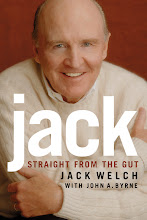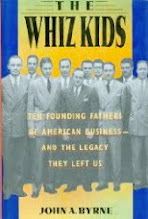Entrepreneur Mark Cuban caused a bit of a stir earlier this month when he said that Google and other content aggregators essentially are vampires that suck the blood of the media. The only way to put a stop to it, Cuban added, was to "put a stake through their gosh darn hearts."
"You guys are always looking for the next thing to save you," he told media players at a conference in New York. "Your core competency is you create news, you create content. You just have to stop offering your necks to the vampires."
It was a good headline for a day or two on most media sites, and the comments drew some fascinating critiques because Cuban is an investor in Mahalo, which leans heavily on aggregation to create content for its own website. Other than the particularly harsh language, there also was nothing new about the complaint. We've heard a similar story from Rupert Murdoch, Sam Zell, and a host of other people in traditional media who want to put pay walls up to prevent their content from being stolen.
But the essential question remains: Are aggregators really thieves?
Truth is, most media brands work very hard to get their work distributed. In my earlier years at Forbes magazine, we had a team of three full-time publicists who worked behind-the-scenes to get media pickup of stories, book writers and editors on radio and television shows, and get the brand maximum exposure. This was also true at BusinessWeek which had (and still has) it's own in-house public relations staff, as well as an external firm to promote BW journalism to prominent bloggers and other media organizations.
As long as aggregators credit the source and even link back to the original content, how is that any different than a media brand's own attempts to gain wider distribution of its stories through PR agents?
Newser, meantime, takes an entirely different approach. It produces no original content, other than the blogged opinions of founder and provocateur Michael Wolf. Everything else is largely a short and snappy two-paragraph rewrite of the day's most entertaining news. Wolf is candid about what he's doing: The "About" section for the site reports that "Newser is a news aggregator with brains. We select the best news stories from hundreds of sources all over the web, read them for you, and summarize them in two succinct, sharply written paragraphs or less." It's stock market coverage on a recent day, posted 35 minutes after the market's close, was a graf and three bullet points, all taken from The Wall Street Journal, which posted its account just 16 minutes earlier. A "review" of the new movie "Blood Done Sign My Name" opens with two short sentences followed by four grafs stolen from four reviews published by The Philadelphia Enquirer, New York Post, Variety, and Chicago Sun-Times. There are links to the original stories in all of these files--if you want them. So Newser not only credits the source, it essentially sends traffic to their sites—at least for the readers who want the full stories.
All of this is perfectly legal, falling within the rules of fair use. But is it ethical or moral? After all, Newser and other aggregators are profit-making enterprises whose business models are essentially dependent on the investment of billions of dollars to produce the content they steal.
I don’t believe its unethical and here’s why: 1) At least in the above examples, there is total transparency to what is going on, 2) The original source is given credit for the article, and 3) The aggregator provides highlighted ink sback to the original content, driving revenue-producing traffic back to the source.
This isn’t exactly what my high school English teacher would call plagiarism. Rather, it’s fulfilling the same aims of a publication’s PR department: getting wider distribution of content to enhance a brand’s image so that more readers will likely either buy the publication or go to its website. Whether those goals are achieved is another story.
What do you think?













